Episode 2
“Freeform Design”
by Hironao Kato (MagnaRecta)
Have you ever seen a mannequin that is formed as a geometrical latticework? They came out of an integration of 3D printing and other technologies, and you will find them, among other places, in the stores of A-POC ABLE ISSEY MIYAKE. The driving force in this is Mr. Hironao Kato of MagnaRecta. The 130 (“One Thirty”) brand is a completely new venture based on a wide range of superior functions and manufacturing processes, and in some senses seems itself to be a new approach to cycling value. We explore its background and potential in a conversation with designer Yoshiyuki Miyamae.
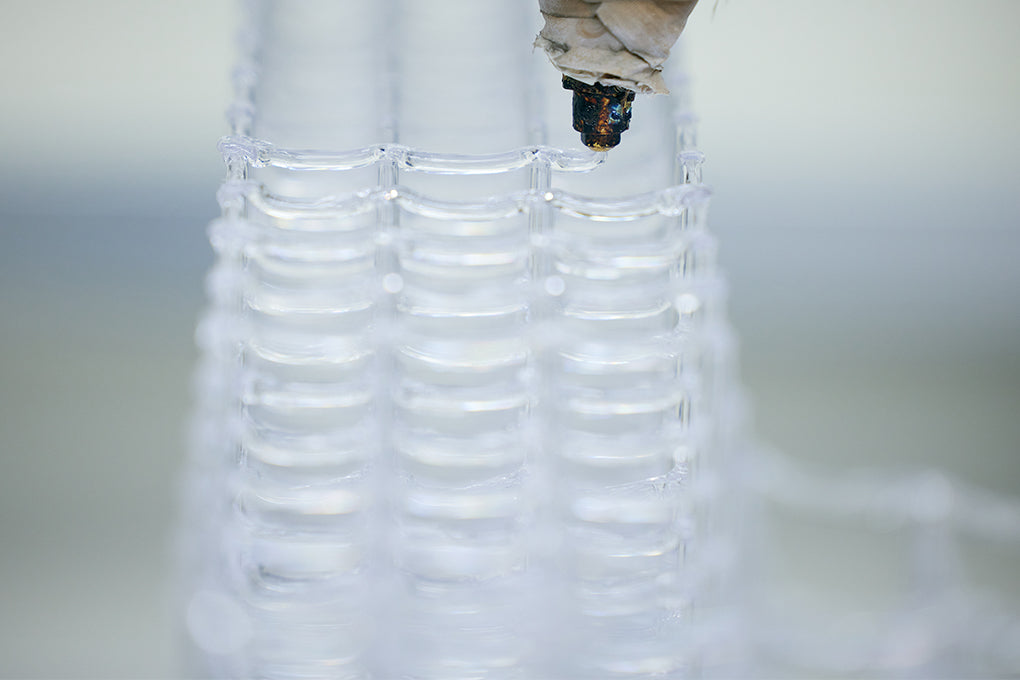
Nihonbashi, Tokyo. The neighborhood flourished as a center for Edo-period commerce, and in the alleyways behind the long, deep buildings, you can still glimpse remnants of the wholesalers and warehouses of the past. It is in one of these corners that you’ll find MagnaRecta’s offices, both the design studio and the factory where the products are made. On the other side of a nondescript door lies a space with high ceilings and no internal divisions, a legacy of its past as a warehouse. A large 3D printer built around an aluminum frame works away, in a slow and regular frequency.
But it does not work like your ordinary 3D printer. One would expect a 3D printer to form an object by layering it from bottom to top, but MagnaRecta’s “130” creates products that are geometrical latticeworks, the filaments injected as vertical, horizontal and diagonal rods.
It is a unique idea that abandons the concepts of planar (two dimensions) and multi-planar (three dimensions) objects in favor of combinations of lines (one dimension), an innovative idea that enables the creation of precise, detailed spatial models. This may not be how a 3D printer is supposed to work, but the structures it produces are both lightweight and resilient, the time and cost of manufacturing are reduced, and the final products combine the precision of industrial products with the warmth of human crafts, says Mr. Hironao Kato, the founder and CTO of MagnaRecta. We began our conversation by talking about his background and how he arrived at this point.
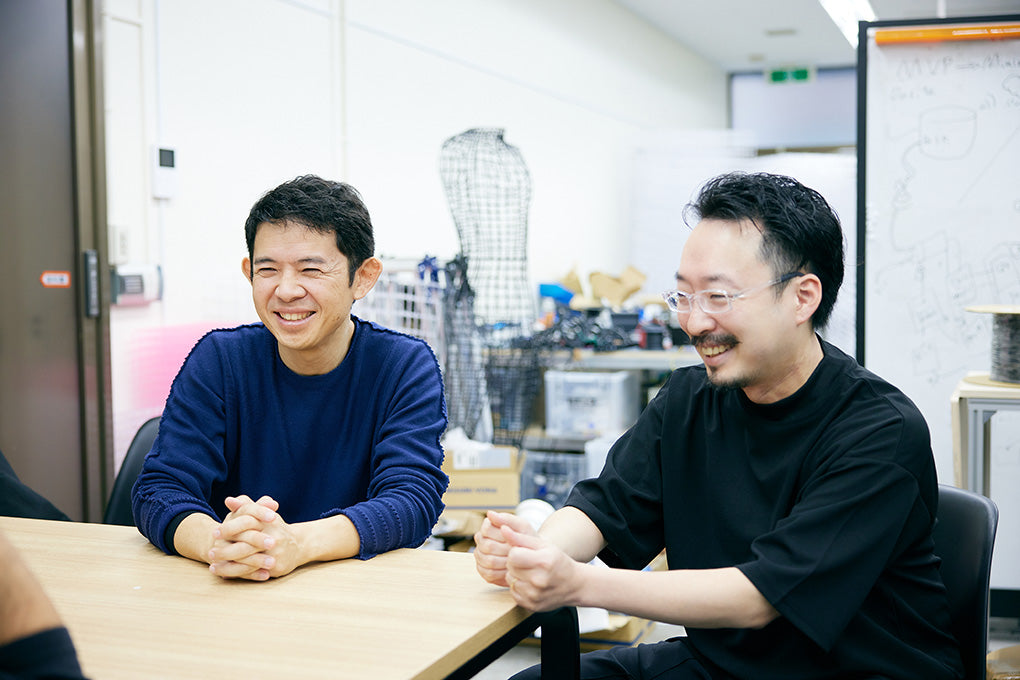
──It seems there were long discussions with A-POC ABLE ISSEY MIYAKE (“A-POC ABLE” below) leading up to the development of 130.
Hironao Kato (“Kato” below): We have to go back to around 2018. At the time, I was working in the lab of [Yoshihiro] Kawahara at the University of Tokyo, helping out with academic articles and the development and implementation for a project they were working on. My friend Ai Hasegawa (artist/designer) was working in the lab as a researcher, which is where my connection came from. At some point along the way, everyone in the lab decided to visit the Issey Miyake office, and I went along. That was the first time I met Miyamae-san.
Yoshiyuki Miyamae (“Miyamae” below): That’s right, it was. That brings back memories. I was a designer at ISSEY MIYAKE at the time.
Kato: As I recall, we were a very large group when we invaded your workplace (laughs). Among us was [Kazuya] Saito, who is now a noted authority on origami engineering and teaching at Kyushu University. We watched as steam was used to fold fabric, and Saito-san rattled off the names of the folds and explained how they worked. It was incredibly interesting. And what really left an impression was the fact that everyone at Issey Miyake was creating things with their own hands. Even if it was sometimes a bit laborious.
Today I work with 3D printers and other electronics, but I majored in products and interiors at art school (Parsons School of Design in New York), so I’ve always been more inclined towards hands-on, tinkering work. Your approach was something I could relate to.
──Was there something about Issey Miyake’s manufacturing that resonated with you?
Kato: Yes, there was. Before returning to Japan in 2011, I worked in product design in the United States. At that time, the approach there was to quickly churn out products that would be temporary, rather than manufacturing things that could be used in the long term. Like in architecture, it is crucial in product design that you maintain value over the long term, and that is something that everybody was supposed to have learned at university, but I perceived conflicting forces at work when it came to business.
I never really made peace with that, and even though I had a work visa and a job as a designer, I decided to come back to Japan. Perhaps because of that, there was something that really grabbed me about the culture at Issey Miyake.
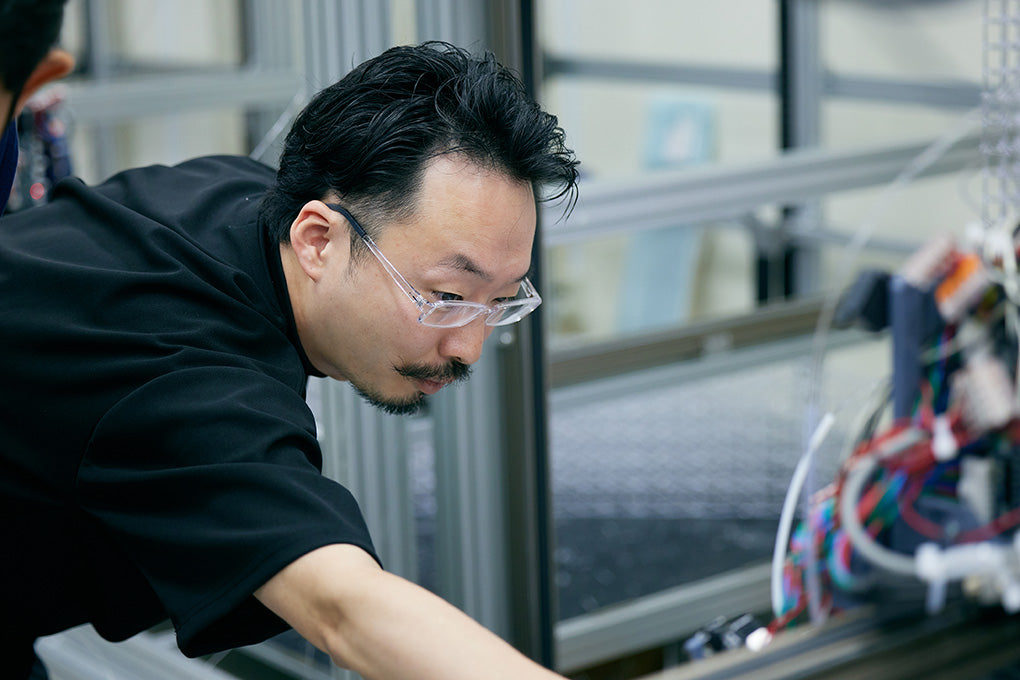
──How did 3D printing come into all this?
Kato: At first, it was more of a hobby, just something I played with. That’s what it was for me while I was in the United States, and not long after I came home, I started a community for open source 3D printer code (RepRap Community Japan) and began exhibiting. Along the way, I seem to have earned a reputation as “the guy who brought open source 3D printing back to Japan” (laughs), and unwittingly found myself starting a company.
──That was “Genkei,” the predecessor of “MagnaRecta.”
Kato: Correct. We were designing, developing and selling 3D printers. We jumped right over product design and into electrical engineering, robotics and digital fabrication. But we were not complete novices. I majored in product design at university, but I was really a bit closer to concept design. For example, my research covered things like concept cars exhibited at motor shows, and the production design used in films like ‘Blade Runner.’
On the other hand, my personal philosophy was that concepts for the future shouldn’t be restricted to movies and trade shows, but investigated in terms of “how can they be implemented in society?” This meshed really well with this new technology called 3D printing that allowed you to output your ideas directly.
──So in 2018, you reorganized as “MagnaRecta.”
Kato: At the time, digital fabrication was booming, and we were able to attract large numbers of customers for our 3D printers. But, as I said earlier, what we really wanted to do was to implement new concepts for society. That is why we overhauled our business strategy and organization to better orient them toward that goal. So after becoming a 3D printer shop, we came back to the world of design. I first met Miyamae-san right as we were going through that transition.
Miyamae: Back then, your office was Akabanebashi, not here. Obviously, we were interested in this new 3D printing technology, but we were also very excited about the directions you were trying to go.
Kato: I likewise found something deeply resonating about the workspaces and environments I saw at Issey Miyake. Most of the clothing and fabric you made was very geometric, but it was produced by hand in an extraordinarily meticulous process. I thought that was fantastic.
There was much that our company could learn from you, and we began to have ambitions about doing something in the field of fashion. Which is not to say that we all of a sudden proposed a collaboration on something specific. Basically, we were at the “let’s keep in touch” level. I would converse with Miyamae-san as we searched for possible co-research projects or other new opportunities.
Miyamae: I was talking one day about some of the challenges that we faced when the conversation turned to mannequins. At the time, we were using mass-produced plastic mannequins. If we wanted something original, it would’ve involved the creation of metal molds. Ideally, we can have all sorts of different shapes depending upon the apparel, but it would’ve been extremely costly to try to do that with the existing mannequins.
The potential to build them with 3D printers seemed like an interesting proposition. We began our discussions with a clean slate, making no assumptions about materials or shapes.
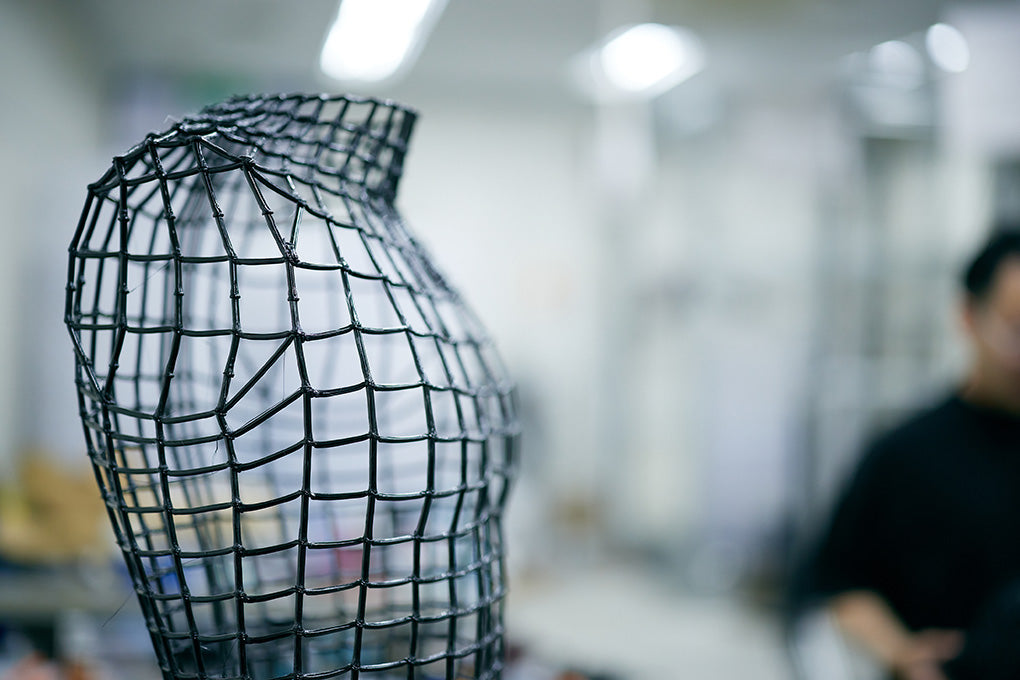
──Were there any prior examples of mannequins created with 3D printers?
Kato: Nothing that was designed for mass production. It was probably too much of a niche. There were artistic objects that were more akin to sculptures, but no commercial mannequins.
Miyamae: It began as a long process of trial and error. The first step was to consider materials. Today, you can find the mannequins in A-POC ABLE stores, but it took several stages of evolution to get to this point. Our very first mannequin was introduced to the world with “TADANORI YOKOO ISSEY MIYAKE 0” (2019). This project was a predecessor to today’s A-POC ABLE. We exhibited it at the T-SITE gallery in Daikanyama, Tokyo, and the response was tremendous.
For the first generation of mannequins we played with the hair styles--afros and ducktails and the like -- but by the third, we were posing them kabuki-style. In fact, we actually had kabuki actors come in and pose for us so that we could make 3D scans. We took an incredible number of photographs for our iPhone 3D scanning function.
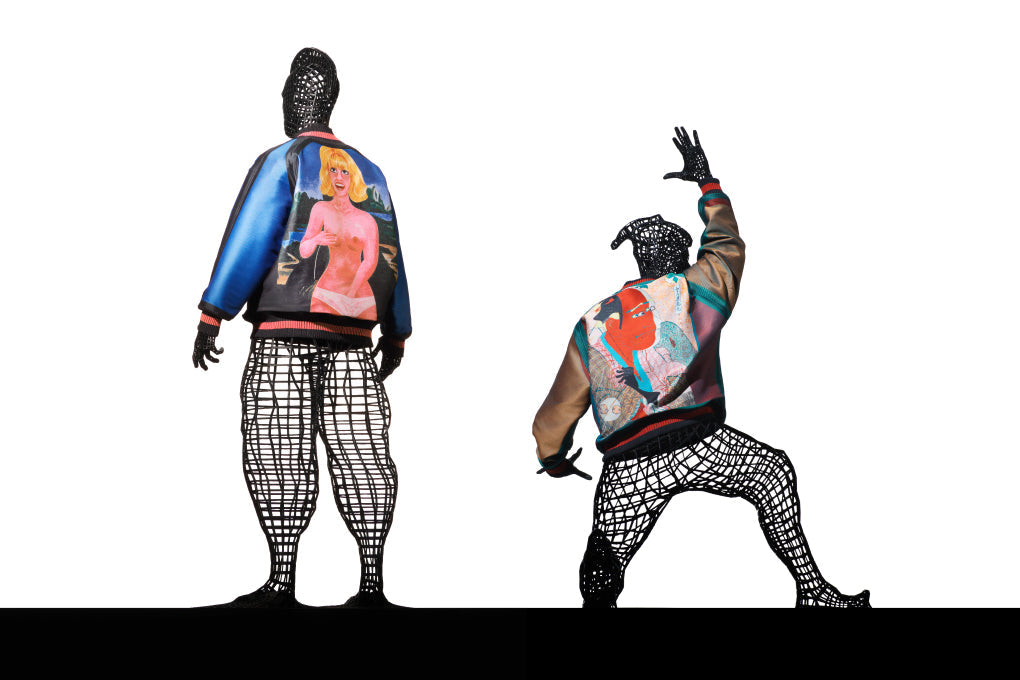
Kato: I remember that! (Laughs) You may have already guessed this, but I love anything that’s new. We used photogrammetry,* which had just come out. The mannequin’s structure included features such as a removable neck and a mesh-like appearance that would connect to our mannequins today, but at that time, it still used the traditional layered construction method.
*a technology for creating 3D models from multiple photographs
Miyamae: The mannequins were very original and innovative. Yes, they were still laminated, but there were no problems at the exhibit, though we still had to think about how, in practical terms, to deploy them to the stores. Among the problems was the fact that if you tried to increase the speed of the output, they would lose their smoothness and you would have all of these tiny bumps that the clothing would catch on. This could’ve been dealt with by hand in post-processing, but it would’ve required time and money.
These were some of the problems we had to address before we could bring the mannequins to stores. But looking at it the other way around, if we could address these issues, we had a path to commercial use. As the A-POC ABLE brand was launched in 2021, we were engaged in co-research with Kato-san, and he provided us with proposals that eventually led to our current model.
Kato: It was a big shift. We were still using the mesh structure, but to be honest, it was no longer three-dimensional printing. Lamination traces are one of the weaknesses of 3D printers, and we had always been aware of this, but we also encountered problems with the output being easily broken, unable to bear much weight, and consequently unsuited to large sizes. While they satisfied our needs for exhibitions, they were inadequate for daily use displaying apparel.
But it was hard to arrive at solutions. I think we worked on it for two or three years. At the time, there was a growing consensus that, for physical reasons, 3D printers were not really suited to commercial use. I kept reading the academic papers and looking for a new way of doing things. In the course of this, I encountered “aerial modeling.” This was not something new. It had been discussed in the academic literature for a long time and there were toy 3D pens made with the technique already on the market. On its own, the concept would not get you very far, but I thought it might be able to shed light on things. I asked Miyamae-san to take a look.
Miyamae: You showed me a prototype that resembled a birdcage. Unlike the laminated output, it was extremely smooth. I thought that, with something like this, the fabric would not catch on it and we might be able to put it into commercial use.
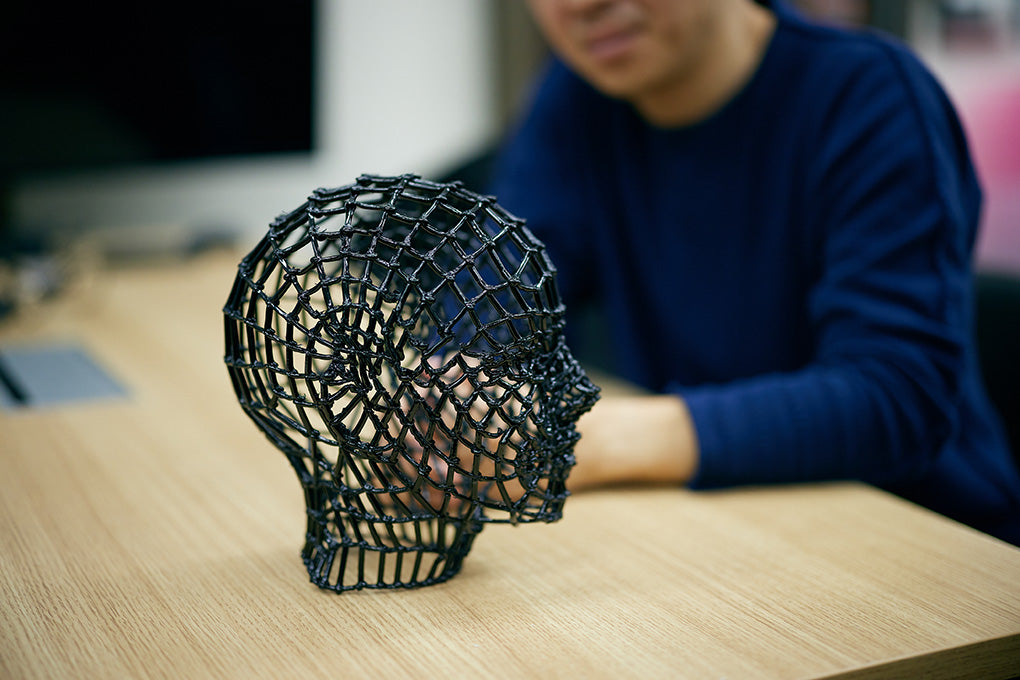
──So this is what led you away from the conventional layering approach and into the current technique of injecting rod-like shapes?
Kato: Yes, it was. The problem was that you could inject resin as rods, but it was difficult to shape it and it lacked strength. You could, however, stack the rods on top of each other to achieve greater strength. It was really quite simple. 3D printers have always been a process of two dimensional layering. The more layers you add, the rougher the output. The technique we developed was one dimensional. We built things out of rods. In that sense, it was no longer three dimensional printing at all.
──The structure was one dimensional, and the product was three dimensional. This was a fundamental change in how 3D printers were used.
Kato: As we were investigating this approach, we began to think in terms of design. What were we actually creating? All we knew is that what we were doing was the complete opposite of existing 3D printer technology and values. Our goal was to use one dimensional injection rather than two dimensional, and to quickly build things that were lightweight rather than heavy and robust.
Miyamae: The perspective of time was very important to us. It impinged directly on cost. It might be okay to spend all the time and money you want when you are creating works only for exhibits, but what we wanted to do with Kato-san was to produce mannequins that could actually be used in stores, and that necessarily lead to cost comparisons against existing, conventional alternatives.
In that sense, the time required for manufacturing translated directly into cost. Meanwhile, weight influences transportation. When Kato-san showed us his new 3D printer technique, our expectations and requirements for our new mannequins became much clearer.
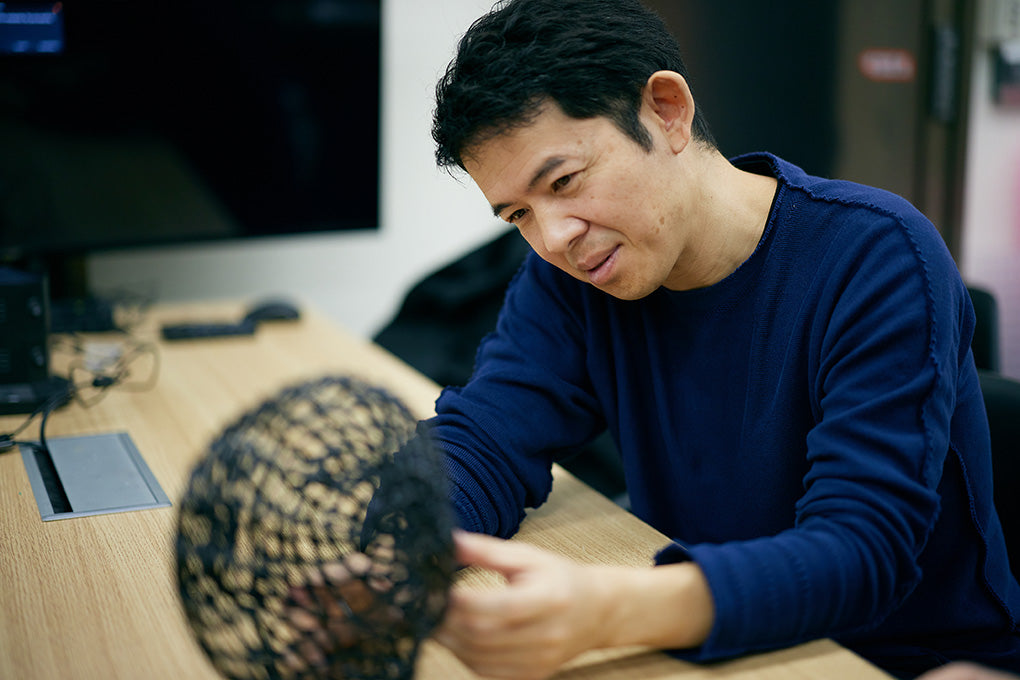
──What are the benefits of the lattice structure?
Kato: Sometimes 3D printers do not inject properly, and with conventional approaches, you end up with spaghetti or cracked surfaces and then you have to start over from the beginning. Obviously, things do not always go according to plan at 130, but we are OK with that. The reason is that we can simply cut off the part that failed and bring things together with newly injected filaments. It’s a structure that does not lead to molding failures.
──Redoing a piece is very simple because there are no planar structures, but there is a certain amount of regularity.
Kato: That’s true. That superiority goes beyond the manufacturing process and continues after the product is finished. It is very easy to make repairs and fixes, or to add something new. No matter how robustly it’s made, there’s always a possibility that parts may break with use. However, with 130, you can quickly restore it to its original state.
What we want to achieve in our manufacturing are products that you can use for as long as possible without losing any value. We call this “bone fractures”. It’s the same concept you see in kintsugi repairs made to broken pottery and porcelain. And if there’s something you don’t like, you can easily get rid of it or add some sort of new functionality.
Miyamae: That’s very appealing. It had never been an easy task to repair mannequins. Even if only a small part were broken, the entire thing became unusable. The 130 approach to manufacturing is more flexible and helps you maintain the value of the object.
Kato: At its core, our philosophy of manufacturing is to maintain the beauty of the object but allow its form to change. The part is a single PET rod. What is important is how you give it value and change it, what sort of functions you want it to have and how you, as the creator, want it to feel.

──Do you use conventional materials?
Kato: Yes. PET. With 3 squares each in length, width, and height, it is strong enough to withstand the load from a single adult. And it is 100% PET, a single material that is easy to recycle.
──Do you also use conventional softwares and applications?
Kato: At the base, we use ordinary applications like 3D CG animation. But we extend it with our own newly-developed programs and a bit of extra software. Originally, when we reached the stage of sequencing the injection of the rods--do you go lengthwise first or widthwise?--We had to do the work by hand, but we have developed an algorithm to automate that.
Miyamae: That’s incredible! Once that is automated, your manufacturing speed is going to accelerate even more. The product may appear to be the same geometrical structure, but there have been innovations in the process behind it. This is the kind of thing I find exciting!
Kato: Back when we were manufacturing and selling 3D printers, we held several patents, but they were immediately copied and converted for use in different mechanisms. That is why we wanted to get out of the business of 3D printer manufacturing and technology, and into the business of integrating these technologies into solutions. I haven’t talked about this much elsewhere, but we kept everything under tight wraps as we were developing.
Or perhaps you can produce something that looks exactly the same. There are already similar experiments going on in areas like building materials, and academic papers have been published. In building materials, most of this just involves materials for concrete frames. There hadn’t been any research or development designed to bring this to the level of actual products. 3D printers, applications and algorithms have little value on their own. For operations, you need to integrate seven or eight original technology elements. In other words, it is not easy to create products with the same functionality and beauty of form.
──What do you emphasize in terms of aesthetics?
Kato: We adjust the density of the mesh and the thickness of the rods depending on the form and motif. For example, with mannequins, the head and face are denser and have thinner rods than the body. That is better suited to creating expressions and other detailed shaping. If necessary, we can also inject curved rods.
One of the things I love as a designer is that each individual resin rod has its own texture, like a kind of glasswork. From far away, the product appears geometrical and inorganic, but as you get closer, it starts to softly undulate and take on the texture of crafts.
Miyamae: The connections between rods feel organic to me. Especially with products made from transparent filaments, the light is reflected in beautifully diffuse patterns.

──You talked about recycling. Do you consider your approach to be superior in this regard?
Kato: I do. Firstly, the products are made from a single material. Additionally, they are also lightweight and easy to dismantle. By contrast, wooden boards, something people have been using forever, are extraordinarily difficult to pulverize and recycle. You have to do it in a plant with lots of big machinery. With 130, it’s all very easy. We just put things into gunnysacks and pound them down. They’re easy to carry, and they cost less to rematerialize.
Miyamae: I find that part incredible. This is a realistic mechanism for small-scale recycling. It used to be that if you wanted a new pose for the mannequins in your store, you had to retire everything you already had. With 130, you can take the old mannequins out to the backyard, pulverize them, and then send them back on the delivery trucks that go between the stores so that they can be rematerialized. I want to explore this mechanism more with Kato-san and his team.
Kato: I think this could lead to the smallest-scale product cycle in the world. We talk a lot about recycling, but most products comprise a large number of different materials, and there is a lot of labor involved in collecting and dismantling them. Even after you’ve finished the dismantlement, you have to send each of the different materials to different vendors who specialize in their rematerialization. The costs pile up very quickly.
We can collect everything ourselves and rematerialize it either at a PET recycling plant or on our own. We have a small loop that takes us from manufacturing to products to recovery to re-manufacturing. It goes without saying that the smaller the loop, the less the load on the environment and budget. It’s kind of the ultimate in self-sufficiency.
Miyamae: It’s both ideal and realistic. It will encourage extremely small circulation within manufacturing.

HIRONAO KATO
Founder and CTO of MagnaRecta. Born 1984. After graduating from the Parsons School of Design (New York, USA), worked as a designer at Mckay Architecture/Design and Berm Design NY. Returned to Japan in 2011, became a joint founder of RepRap Community Japan, developed the “atom” as the country’s first 3D printer, moved it to open source, and became a joint founder of GENKEI to develop, manufacture and sell 3D printers. Reorganized as MagnaRecta in March 2017 to leverage its 3D printer and robotics technologies in ways that combine industrial solutions like digital fabrication hardware and software with design. In 2024, launched the “130” brand around an innovative core 3D shaping technology that builds forms by connecting frames made from rods.
Stay tuned for Episode 3, where we will be discussing “Protein Revolution #1”.


















